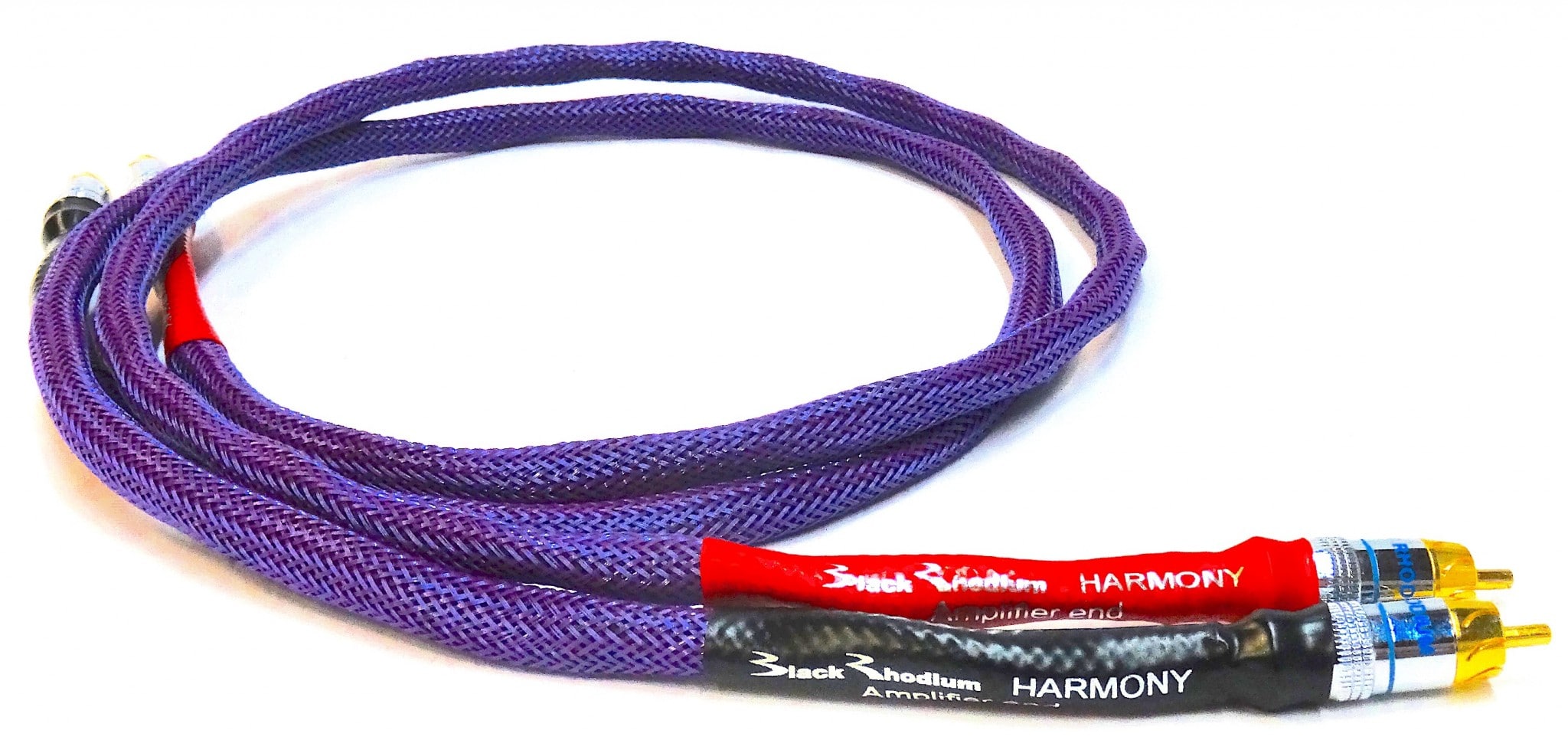The Article
Black Rhodium Harmony interconnect cables: combining new technologies
12th December 2016

Stuffed with company-derived innovations, Paul Rigby reviews the mid- to high-end Black Rhodium Harmony cables
Hand built at the Black Rhodium factory in Derby, the Harmony interconnects feature some of the technologies that the company has been developing for its more recently released loudspeaker cable products.
One of those has been to include low loss silicone rubber insulation for low dielectric absorption. Black Rhodium boss, Graham Nalty, commented that this feature has been added included because, “…to ensure low distortion due to dielectric absorption effects in which sound energy is absorbed in the insulation and released at a later interval of time to create highly audible time-smearing distortion.”
Nalty, also said that he has tackled Transient Phase Distortion by featuring thicker insulation than is usual in speaker cables, “…increasing the distance between conductors and thereby reducing the magnetic field seen in each conductor wire as a result of the magnetic field created by the current in the other conductor wire.”
A further increase in the distance between conductors is achieved, he said, by use of the cable braid and this, “…further reduces ‘Proximity Effect’ distortion.”
The cable is covered in a tightly braided screen to protect the inner cores from picking up radio frequency interference (RFI) generated from radio, Wi-Fi, mobile phones and even central heating systems.
You’ll also notice that the cables are terminated with ‘Hourglass Silhouette’ RCA connectors, plated in gold. The shape of the connector bodies is thus to enable easy insertion and removal at the back of equipment. Having struggled to do just that while reaching around the back of an amplifier in the dark, this is a welcome move.
SOUND QUALITY
I began the sound tests by playing the high energy music from Earth, Wind & Fire and the hit single, Let’s Groove, on CD. Listening to this track with the Harmony cables, I was reminded of an interview I did with Abbey Road, when they released the stereo vinyl box set of The Beatles’ discography. It talked about giving the music as much chance as possible to express itself but also added that it had supplied a touch of compression just to squeeze the sonics a tad to provide a slight punch. That’s what I heard in the Harmony cables.
Hence, the bass had an organic basis but the front each of each note, as the stick struck the skin of the drum, that part of the note, that is where I heard the compression. That little bit sounded ever so slightly drum machine-esque. There was always a slight spotlight shining upon the music via these cables. The sweeping bell effect at the beginning of the track also betrayed a hint of a squeeze at the upper midrange level. The tingling from the tiny bells were enhanced, with a slight edge. Not too much. But it was there.
The problem with this effect is a risk of listening fatigue if you listen to high energy music, such as this track, over long periods. On the other hand bass, for example, offered an extra punch while synth runs had an added bounce and vitality. Swings and roundabouts, therefore.
Another double-edged sword surrounded the vocals. Hence, while crescendos were a touch on the bright side, the delivery was articulate and precise which added to the pace of the track.
So how about vinyl? I tried Ella Fitzgerald’s take on the Latin-esque classic, Hernando’s Hideaway. Would the warming vinyl source remove the touch of midrange hardening? Partly. During orchestral crescendos, at high volumes, involving lots of brass, then you could easily hear the stridency peeping through. Similarly, the lead vocal, during similar crescendos were also a touch edgy.
That said, the detail retrieval was excellent, the Harmony cables were able to dig deep into the mix and bring a host of information towards the listener. The general position of the soundstage reflected that, actually, as the music sounded like it was being pushed more towards the listener or, alternatively, you had taken a few steps towards the orchestra. Of course, because of this, certain complex elements of the arrangement tended to clash with one or two instruments falling over each other but there was also a sense of intimacy and involvement in terms of the midrange. These cables were also ideal for systems that had to be played at lower volumes, as they retained a huge amount of detail and were incisive even at these levels.
CONCLUSION
Despite a layer of compression that sits upon the sonic output of these cables, the Harmony does everything asked of it in terms of detail gathering, bass response and a broad soundstage. Better suited for analogue chains, the cables are ideal for low volume output.
BLACK RHODIUM HARMONY INTERCONNECT CABLES
Price: £370 for 1m pair
Website: www.blackrhodium.co.uk
Tel: 01332 342233
GOOD: detail retrieval, bass punch, low volume performance, midrange insight
BAD: slightly strident midrange



